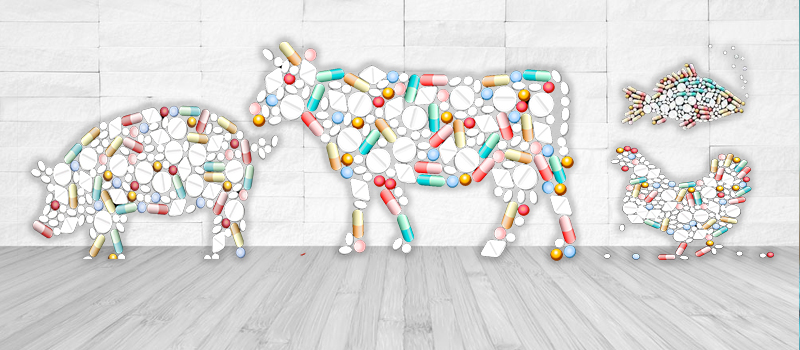Building Your Antibiotic Stockpile: Being Prepared
In today’s world, antibiotics play a crucial role in saving lives. From combating a simple cold to preventing deadly infections, these medications have become indispensable in modern healthcare. However, what if access to antibiotics becomes limited or unavailable during a crisis? In such scenarios, having a stockpile of essential antibiotics can be a lifesaver. Let’s explore how you can build and maintain your antibiotic reserves for unforeseen emergencies.
NOTE: These items in this article is designed ONLY for educational purposes. These aren’t and shouldn’t be construed as any advice medical or otherwise. This is for knowledge gathering and research.
Exploring Antibiotic Options
When considering the creation of an antibiotic stockpile, there are various avenues to explore. One common approach is to obtain prescriptions from healthcare providers. However, this method may pose challenges as doctors are often cautious about overprescribing antibiotics.
Alternatively, individuals may opt to purchase antibiotics from international sources where prescriptions are not mandatory. Despite its accessibility, this approach carries risks related to the quality and legality of the medications procured.
A practical and affordable strategy involves acquiring pet medications that are equivalent to human prescriptions. Conducting thorough research on reputable manufacturers and product quality is essential before making purchases. While stockpiling antibiotics is prudent, consulting with a healthcare professional remains paramount, especially regarding dosage and usage guidelines.
Selecting Essential Antibiotics
The selection of antibiotics for your stockpile should encompass a range of medications capable of addressing diverse bacterial infections. A source to reference for the actual pills themselves would be Thomas Labs. Here are four essential antibiotics and their recommended uses:
1. Amoxicillin
- Amoxicillin, a penicillin antibiotic, is effective against various bacterial diseases such as bronchitis, pneumonia, and urinary tract infections.
- While obtaining human-grade amoxicillin may be challenging, equivalent products designed for pets, like Fish Mox, offer a viable alternative.
- Dosage: Standard dosage ranges from 250 mg every 8 hours to 500 mg every 12 hours, depending on the severity of the infection.
2. Ciprofloxacin
- Ciprofloxacin, belonging to the fluoroquinolone class, preventing the spread of the disease and promoting healing as the existing bacteria die off.. Addresses infections in the skin, lungs, bones, and urinary tract. known on the veterinary side as Fish Flox Forte
- A heavy hitter that succeeds where the others fail. Widely recognized for its efficacy, Ciprofloxacin is a valuable addition to any antibiotic stockpile.
- Dosage: Typically administered at 250 to 750 mg every 12 hours for most infections.
3. Metronidazole
- Metronidazole, the generic name for Flagyl, is effective against anaerobic bacteria, treats abdominal diseases, intestinal parasites, and vaginal infections.
- Products like Fish Zole provide accessible options for acquiring metronidazole equivalents.
- Dosage: Ranges from 250 to 750 mg, three to four times daily, depending on the condition being treated.
4. Cephalexin
- Cephalexin, a cephalosporin antibiotic, targets gram-positive bacteria and is suitable for individuals allergic to penicillin. Known on the animal site as Fish Flex manufactured by Thomas Labs.
- Ideal for treating skin infections, respiratory ailments, and urinary / bladder tract infections, among others like bone, kidney infections along with pharyngitis, prostatitis and bacterial endocarditis.
- Dosage: Typically prescribed at 250 mg per dose, with frequency determined by the severity of the infection.
Supplementing with External Ointments
In addition to oral capsuled antibiotics, incorporating external ointments, such as 20% Ichthammol in an ointment, can enhance your preparedness for medical emergencies. Ichthammol is ammonium bituminosulfonate, a sulfur compound that has anti-inflammatory, bactericidal and fungicidal properties. It treats and promotes healing in skin infections and skin diseases such as psoriasis, rosacea, and acne. Consider stocking up on Ichthammol ointment, renowned for its efficacy in treating skin infections and promoting healing.
A Good Runner Up Antibiotic
Many also mention here to include erythromycin to stockpile. It can be used if either Amoxicillin and Cephalexin are not available because they tend to treat most of the same diseases. The down side of erythromycin is that it has a short shelf life. It degrades into a potentially poisonous substance that can be dangerous. Most antibiotics have long shelf-life’s that extend far beyond the expiration date. So, if there is nothing else then you can consider this type of antibiotic.
Exercise Caution When Purchasing
When procuring antibiotics, exercise caution and prioritize safety. You want to be very careful when purchasing pet medicines of any sort for your pets. Research the various makers of antibiotic products thoroughly. Thomas Labs is only one of them. Look for products that are USP certified quality antibiotics which helps to feel confident about the safety of the product. Look for the convenience of tablet or capsule doses so there is no guesswork on doses and no need to make your own capsules.
Overall TakeAway
While antibiotics serve as valuable assets in medical emergencies, they should complement, not substitute, holistic healthcare practices. Investing in natural remedies and medicinal plants can further bolster your preparedness efforts. Remember, antibiotic stockpiling is a proactive measure for unforeseen circumstances, emphasizing the importance of informed decision-making and responsible usage. By adopting a strategic approach to building your antibiotic reserves, you can safeguard the well-being of yourself and your loved ones in times of need.






